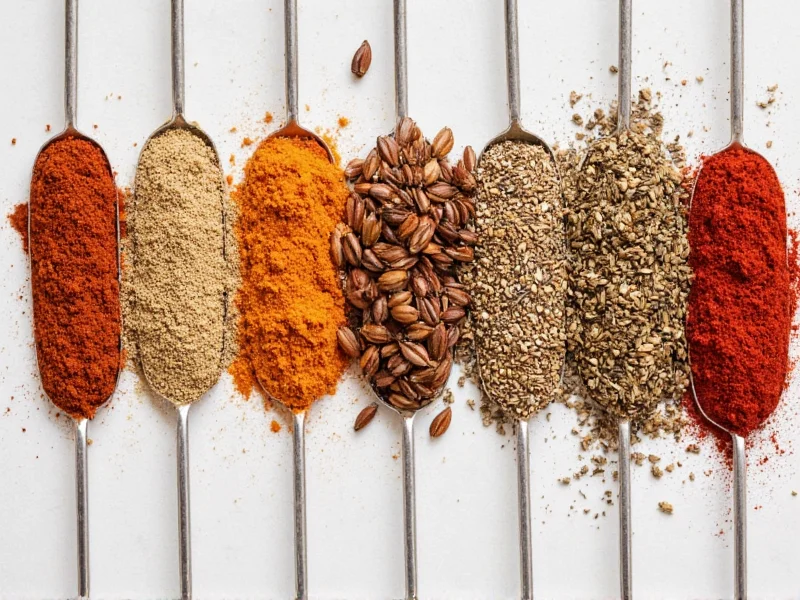When navigating gluten-free cooking, understanding spice safety is crucial for those with celiac disease or gluten sensitivity. While the botanical nature of spices means they're inherently gluten-free, modern food production introduces risks that require careful consideration.
Why Pure Spices Are Naturally Gluten-Free
Spices originate from plant parts like seeds, bark, roots, and fruits—none of which naturally contain gluten proteins found in wheat, barley, and rye. Cumin, turmeric, paprika, and other single-ingredient spices in their pure form pose no gluten risk. The confusion arises from what happens after harvest.
How Gluten Contamination Occurs in Spices
Three primary contamination pathways threaten spice purity:
- Shared manufacturing equipment - Facilities processing both gluten-containing products and spices without thorough cleaning between batches
- Anti-caking agents - Some manufacturers add wheat-derived dextrin or other gluten-containing substances to prevent clumping
- Bulk bin cross-contamination - At grocery stores where customers use shared scoops between gluten and gluten-free products
| Spice Type | Contamination Risk Level | Common Contamination Sources |
|---|---|---|
| Single-ingredient spices (pure) | Low (when certified) | Shared equipment, anti-caking agents |
| Spice blends (taco, curry, etc.) | High | Added fillers, shared production lines |
| Bulk bin spices | Very High | Cross-contact from customer handling |
| Imported spices | Moderate to High | Varying international regulations |
Identifying Truly Gluten-Free Spices
Don't rely solely on "gluten-free" claims on packaging. The most reliable approach involves:
- Certification verification - Look for GFCO (Gluten-Free Certification Organization) or NSF certification logos, which require testing to 10ppm or lower
- Direct manufacturer contact - Ask about their testing protocols and facility practices
- Reading beyond the label - Check for statements like "processed in a facility that also processes wheat"
- Choosing dedicated facilities - Some brands operate exclusively gluten-free production environments
High-Risk Spice Categories to Monitor
Certain spice products warrant extra caution:
Spice blends frequently contain wheat-based fillers. Common culprits include:
- Seasoning mixes (taco, fajita, ranch)
- Curry powders (some contain wheat flour)
- Herbes de Provence (sometimes cut with oat flour)
- Commercial garlic salt (may use flour as anti-caking agent)
Imported spices from countries with less stringent labeling laws may contain undeclared gluten. This is particularly true for spices from regions where wheat is commonly used as a thickener.
Practical Shopping Strategies for Gluten-Free Spices
Implement these evidence-based practices when purchasing spices:
- Avoid bulk bins entirely - The cross-contamination risk is too high for those with celiac disease
- Choose sealed containers - Opt for spices in factory-sealed packaging rather than store-refilled containers
- Build relationships with manufacturers - Many specialty spice companies welcome inquiries about their gluten protocols
- Create your own blends - Combine certified single-ingredient spices to avoid blend risks
- Store spices properly - Use airtight containers away from gluten-containing products to prevent kitchen cross-contact
Testing and Verification Methods
For those extremely sensitive to gluten, consider these verification approaches:
- Home gluten test kits - While not perfect, they can detect gluten above 20ppm in spice samples
- Batch testing services - Independent labs can test your spices for gluten content
- Symptom journaling - Track reactions to specific brands to identify problematic products
Remember that individual sensitivity varies greatly. Some people with non-celiac gluten sensitivity tolerate certain brands that others cannot, making personal verification valuable.
Trusted Resources for Gluten-Free Spice Information
Consult these reputable organizations for updated guidance:
- Celiac Disease Foundation - publishes regular spice safety updates
- National Celiac Association - maintains a brand directory with manufacturer responses
- Gluten Intolerance Group - offers certification standards and consumer education











 浙公网安备
33010002000092号
浙公网安备
33010002000092号 浙B2-20120091-4
浙B2-20120091-4